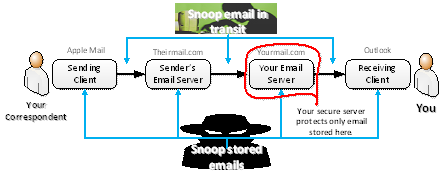I’ve been thinking about tax refund fraud a lot this month. I was resolved that we would get our tax return in early this year so it would be harder for a scammer to rip off our refund, but not all the required documents have wandered in yet and so I sit and fret.
The FBI and the IRS are expecting more fraud than last year, and last year set records. I thought maybe folks would be interested in how the tax refund fraud business works. It is simple: a scammer sends in a fraudulent tax return in your name that nets a big tax refund. The scammer arranges to have the refund wired to his account instead of yours. Then the money vanishes and so does the scammer. When you file your genuine return, the IRS shows its unpleasant side until you can prove that you are the real Clem Kaddidlehopper.
How can the hackers do this? Tax refund fraud is big business. Like all big business, the work is divided up among specialists. Before the tax fraud can occur, the criminals have to steal your identity and steal or manufacture the documents to substantiate a refund that is worth the scammer’s effort and risk. Gathering the documents is the most difficult because it requires the most special knowledge and skill. If scammers have a genuine W-2 form for a victim, they are set. Those W-2s have everything they need.
But how do they get a person’s W-2? The old-school method was to steal them from mail boxes. Modern crooks reject stealing paper mail as risky and inefficient. Stealing W-2s electronically requires more skills, but risk is lower and the take is higher. This year, there have been a number of exploits recorded in which an employee in the financial or human resources department gets an emergency email request from what appears to be the CEO or other higher up in the organization. The request is for the electronic copy of all the W-2s for a department or the entire company. The employee complies and sends the files. Then they discover that the CEO’s email account has been hacked, or on close examination, the email was actually sent by an outside impostor who now has hundreds of juicy W-2s. This outside impostor could be operating from anywhere— onshore, offshore, makes no difference.
What happens then? The impostor might be a tax fraudster, although chances are good that the impostor is an accomplished social engineer who does not dirty his hands with tax fraud. Instead, the impostor goes to a dark net criminal sales site and sells the W-2s for prices that vary based on the amount earned. More money can be extracted from high-earning W-2s, so they sell for more.
The tax fraudster purchases W-2s that suit his fancy on the dark net, then fabricates deductions to extract a large refund from the IRS and files the return electronically. The fraudster’s job is to put together a return that is plausible enough to trick the IRS into believing it is genuine. Although there is word that the IRS has taken steps to clamp down on refund fraud this year, the service is also under pressure to get refunds out speedily, which limits the intensity of the vetting before a check is cut. The growing fraud numbers suggest it is not too hard for a fraudster to fool the IRS.
Good luck! And get those returns in early.
